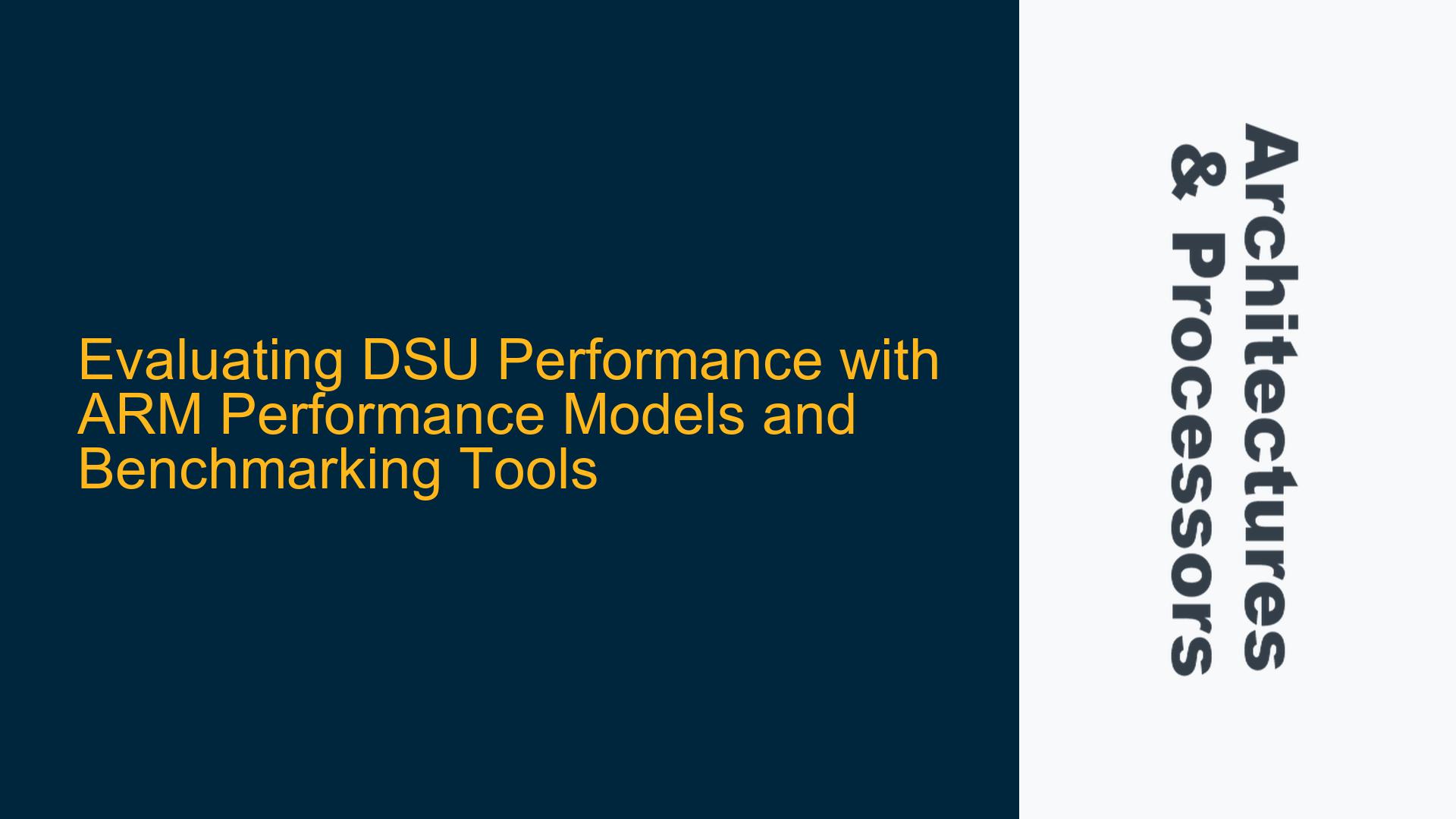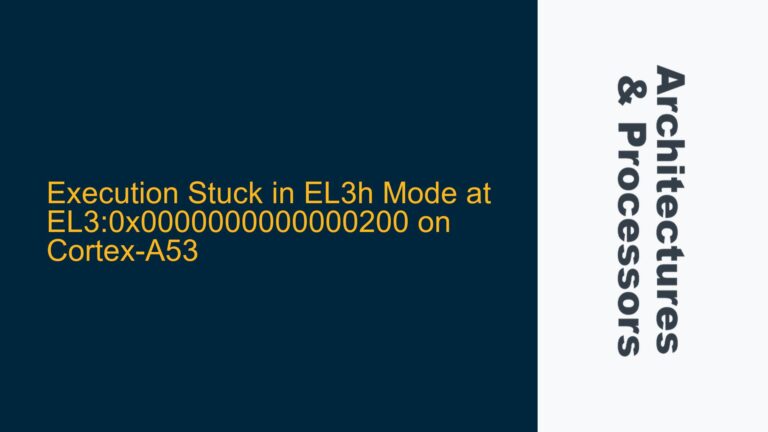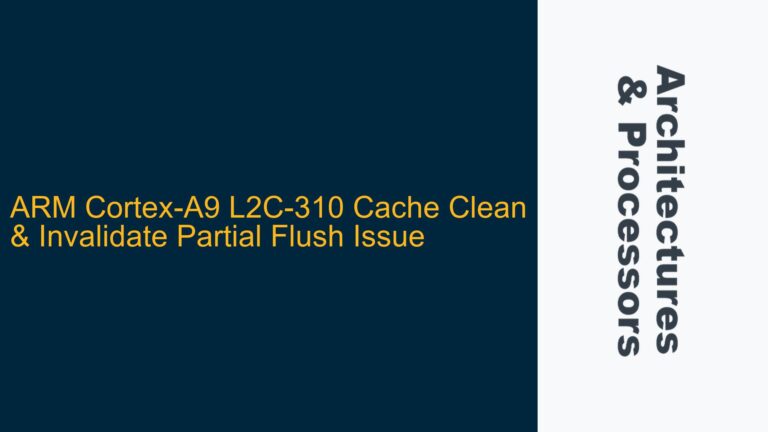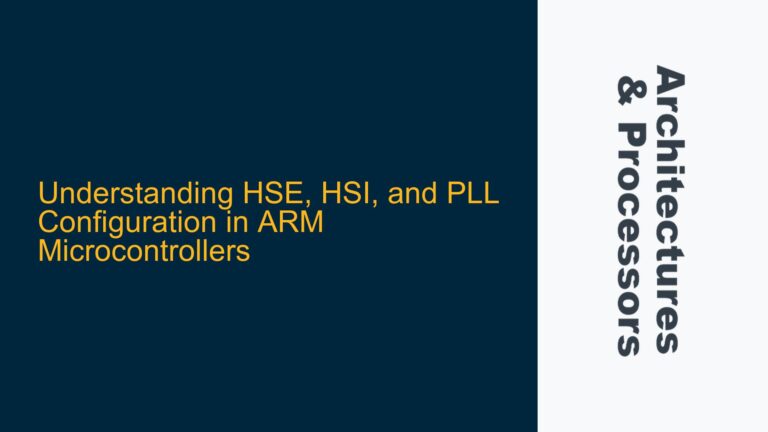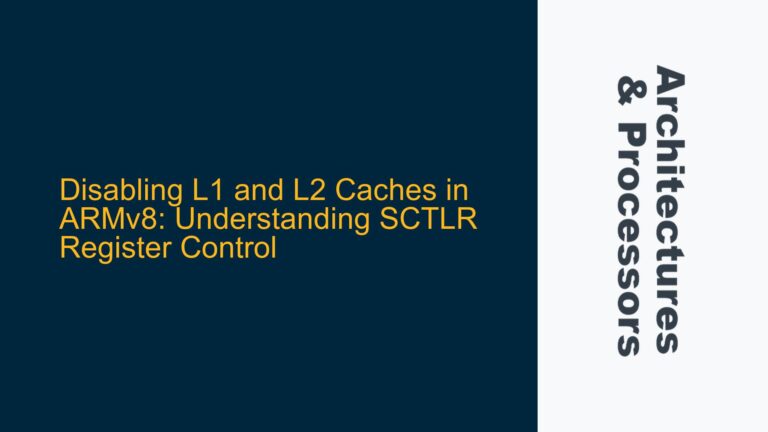ARM DSU Performance Evaluation Challenges and Goals
The DynamIQ Shared Unit (DSU) is a critical component in modern ARM-based systems, responsible for managing shared resources such as L2 and L3 caches, power management, and core coordination in multi-core ARM Cortex-A and Cortex-R processors. Evaluating the performance of the DSU is essential for system architects and engineers to ensure optimal configuration and resource allocation for specific workloads, including benchmark applications and custom software. The primary goal is to measure the number of cycles each application takes under different DSU configurations before committing to RTL simulation or FPGA emulation. This pre-silicon evaluation helps identify potential bottlenecks, optimize cache hierarchies, and validate system-level performance metrics.
The challenge lies in accurately modeling the DSU’s behavior and its interaction with the core, memory subsystem, and interconnect. Engineers must consider factors such as cache coherency, memory access latency, and power management policies, which can significantly impact performance. Additionally, the evaluation process requires tools that can simulate the DSU and its associated components at both functional and cycle-accurate levels, providing insights into how different configurations affect system behavior.
ARM Performance Models and Tools for DSU Evaluation
ARM provides a suite of performance models and tools designed to address the challenges of DSU performance evaluation. These tools enable engineers to create virtual SoCs with ARM core models, interconnects, and memory subsystems, allowing for comprehensive system-level analysis. The key tools and models include:
-
ARM Performance Models: These models are designed to simulate the behavior of ARM cores, interconnects, and memory subsystems at varying levels of accuracy. They include fast functional models for high-level performance estimation and cycle-accurate models for detailed analysis. The models support the evaluation of DSU configurations, including cache hierarchies, power management, and core coordination.
-
Interconnect Performance Models: ARM’s interconnect models, such as the CMN-700, provide detailed simulations of the coherent mesh network used in modern ARM-based systems. These models are essential for understanding how data flows between cores, caches, and memory, and how the DSU manages shared resources.
-
System IP Tools: ARM’s System IP tools include libraries and APIs for integrating performance models into custom simulation environments. These tools support the creation of virtual platforms that mimic the behavior of real hardware, enabling engineers to run benchmark applications and measure performance metrics such as cache hit rates, memory access latency, and power consumption.
-
Benchmarking Tools: ARM provides tools for running standard benchmark applications on virtual platforms, allowing engineers to evaluate the performance of their DSU configurations against established metrics. These tools include support for operating systems and software stacks, enabling realistic simulations of real-world workloads.
Implementing DSU Performance Evaluation with ARM Tools
To evaluate DSU performance effectively, engineers should follow a structured approach that leverages ARM’s performance models and tools. The process involves several key steps:
-
Define the Evaluation Goals: Clearly outline the objectives of the performance evaluation, such as identifying cache bottlenecks, optimizing power management policies, or validating system-level performance metrics. This step ensures that the evaluation process is focused and aligned with the overall system design goals.
-
Select the Appropriate Models: Choose the ARM performance models that best match the desired level of accuracy and detail. For high-level performance estimation, fast functional models may be sufficient, while cycle-accurate models are necessary for detailed analysis of specific DSU configurations.
-
Configure the Virtual Platform: Set up a virtual platform that includes the selected ARM core models, interconnect models, and memory subsystems. Configure the DSU parameters, such as cache sizes, associativity, and power management policies, to match the target system design.
-
Integrate Benchmark Applications: Load the virtual platform with benchmark applications and custom software to simulate real-world workloads. Ensure that the software stack, including the operating system and drivers, is correctly configured to interact with the DSU and other system components.
-
Run Simulations and Collect Data: Execute the simulations on the virtual platform and collect performance data, such as cycle counts, cache hit rates, and memory access latency. Use ARM’s benchmarking tools to automate data collection and analysis.
-
Analyze Results and Optimize Configurations: Review the performance data to identify bottlenecks and areas for improvement. Adjust the DSU configurations, such as cache sizes or power management policies, and rerun the simulations to evaluate the impact of the changes.
-
Validate with RTL/FPGA: Once the virtual platform simulations indicate optimal DSU configurations, validate the results with RTL simulation or FPGA emulation. This step ensures that the performance metrics observed in the virtual platform align with the behavior of the actual hardware.
By following this structured approach, engineers can effectively evaluate DSU performance and optimize system configurations before committing to RTL simulation or FPGA emulation. ARM’s performance models and tools provide the necessary capabilities to conduct thorough and accurate evaluations, enabling the design of high-performance ARM-based systems.
Detailed Troubleshooting and Optimization Techniques
When evaluating DSU performance, engineers may encounter specific issues that require targeted troubleshooting and optimization techniques. Below are some common challenges and their solutions:
Cache Hierarchy Optimization
One of the most critical aspects of DSU performance is the cache hierarchy, which includes L2 and L3 caches shared among multiple cores. Poor cache configuration can lead to high miss rates, increased memory access latency, and reduced overall system performance.
Issue: High cache miss rates in L2 or L3 caches, leading to increased memory access latency and reduced performance.
Solution: Optimize the cache hierarchy by adjusting cache sizes, associativity, and replacement policies. Use ARM’s performance models to simulate different cache configurations and measure their impact on cache hit rates and memory access latency. Consider increasing the cache size or associativity if the miss rate is high, or implementing a more efficient replacement policy such as LRU (Least Recently Used).
Implementation: Configure the virtual platform with different cache sizes and associativity levels, and run benchmark applications to measure cache hit rates and memory access latency. Analyze the results to identify the optimal cache configuration that minimizes miss rates and latency.
Power Management Policies
The DSU is responsible for managing power consumption across multiple cores, and inefficient power management policies can lead to excessive power consumption or performance degradation.
Issue: Inefficient power management policies leading to excessive power consumption or performance degradation.
Solution: Optimize power management policies by adjusting the frequency and voltage scaling algorithms, and implementing dynamic power gating for idle cores. Use ARM’s performance models to simulate different power management policies and measure their impact on power consumption and performance.
Implementation: Configure the virtual platform with different power management policies, such as dynamic voltage and frequency scaling (DVFS) and power gating, and run benchmark applications to measure power consumption and performance. Analyze the results to identify the optimal power management policy that balances power consumption and performance.
Core Coordination and Load Balancing
The DSU is responsible for coordinating tasks across multiple cores, and inefficient core coordination can lead to load imbalances and reduced performance.
Issue: Load imbalances across cores, leading to reduced performance and inefficient resource utilization.
Solution: Optimize core coordination by implementing efficient task scheduling and load balancing algorithms. Use ARM’s performance models to simulate different task scheduling and load balancing algorithms and measure their impact on performance and resource utilization.
Implementation: Configure the virtual platform with different task scheduling and load balancing algorithms, and run benchmark applications to measure performance and resource utilization. Analyze the results to identify the optimal core coordination strategy that minimizes load imbalances and maximizes resource utilization.
Memory Access Latency
Memory access latency is a critical factor in DSU performance, and inefficient memory access patterns can lead to increased latency and reduced performance.
Issue: High memory access latency, leading to reduced performance and inefficient resource utilization.
Solution: Optimize memory access patterns by implementing efficient prefetching and caching algorithms. Use ARM’s performance models to simulate different memory access patterns and measure their impact on memory access latency and performance.
Implementation: Configure the virtual platform with different prefetching and caching algorithms, and run benchmark applications to measure memory access latency and performance. Analyze the results to identify the optimal memory access pattern that minimizes latency and maximizes performance.
Interconnect Performance
The interconnect is a critical component in modern ARM-based systems, and inefficient interconnect performance can lead to increased latency and reduced system performance.
Issue: Inefficient interconnect performance, leading to increased latency and reduced system performance.
Solution: Optimize interconnect performance by adjusting the interconnect configuration, such as the number of layers, bandwidth, and routing algorithms. Use ARM’s interconnect performance models, such as the CMN-700, to simulate different interconnect configurations and measure their impact on latency and system performance.
Implementation: Configure the virtual platform with different interconnect configurations, and run benchmark applications to measure latency and system performance. Analyze the results to identify the optimal interconnect configuration that minimizes latency and maximizes system performance.
Software and OS Support
The software stack, including the operating system and drivers, plays a critical role in DSU performance, and inefficient software configurations can lead to reduced performance and resource utilization.
Issue: Inefficient software configurations, leading to reduced performance and resource utilization.
Solution: Optimize the software stack by adjusting the operating system and driver configurations, and implementing efficient software algorithms. Use ARM’s performance models to simulate different software configurations and measure their impact on performance and resource utilization.
Implementation: Configure the virtual platform with different software configurations, and run benchmark applications to measure performance and resource utilization. Analyze the results to identify the optimal software configuration that maximizes performance and resource utilization.
Validation with RTL/FPGA
Once the virtual platform simulations indicate optimal DSU configurations, it is essential to validate the results with RTL simulation or FPGA emulation to ensure that the performance metrics observed in the virtual platform align with the behavior of the actual hardware.
Issue: Discrepancies between virtual platform simulations and RTL/FPGA emulation results.
Solution: Validate the virtual platform results with RTL simulation or FPGA emulation by running the same benchmark applications and measuring the same performance metrics. Compare the results to identify any discrepancies and adjust the virtual platform configurations accordingly.
Implementation: Run the benchmark applications on the RTL simulation or FPGA emulation platform and measure the performance metrics. Compare the results with the virtual platform simulations and adjust the virtual platform configurations to align with the RTL/FPGA emulation results.
By addressing these common challenges and implementing the corresponding solutions, engineers can effectively evaluate and optimize DSU performance, ensuring that their ARM-based systems meet the desired performance and power consumption goals. ARM’s performance models and tools provide the necessary capabilities to conduct thorough and accurate evaluations, enabling the design of high-performance ARM-based systems.
